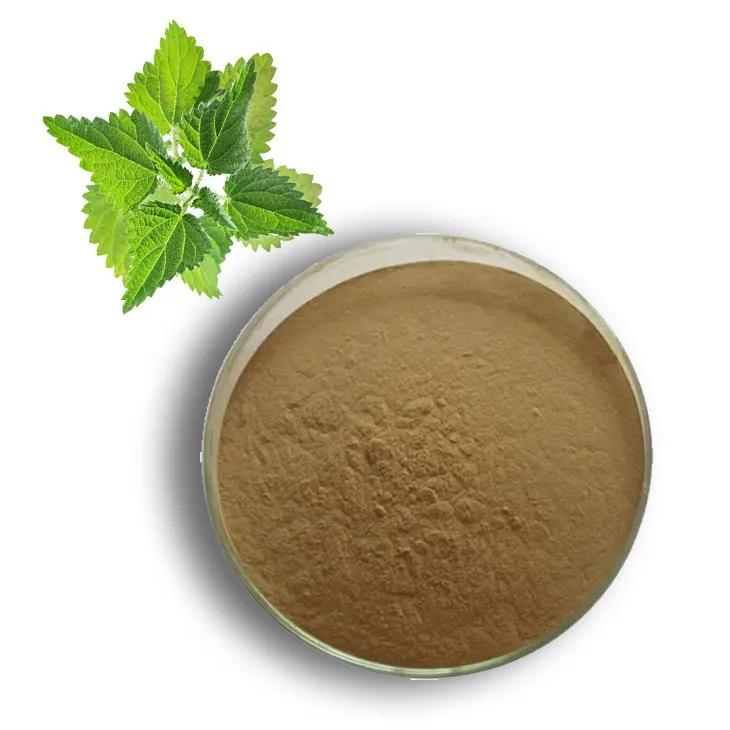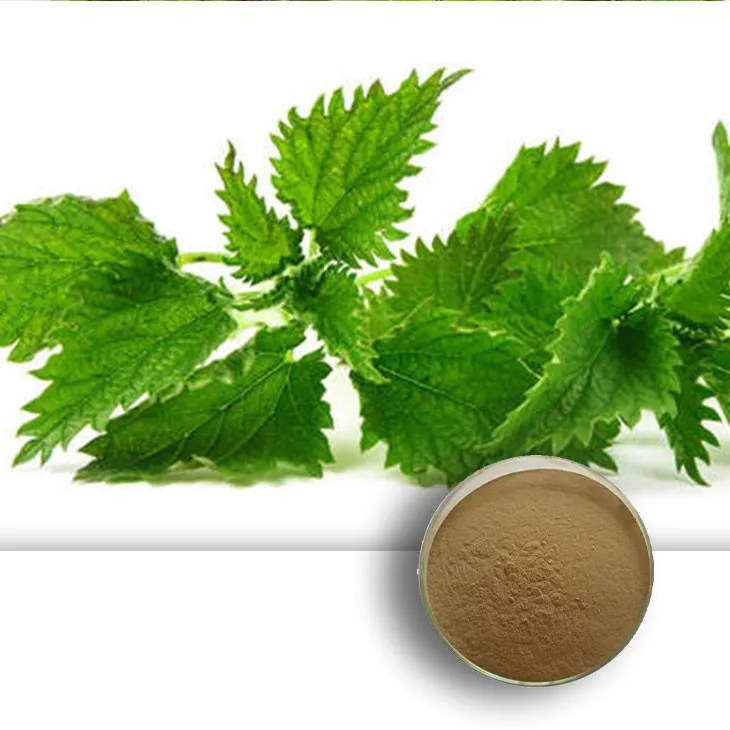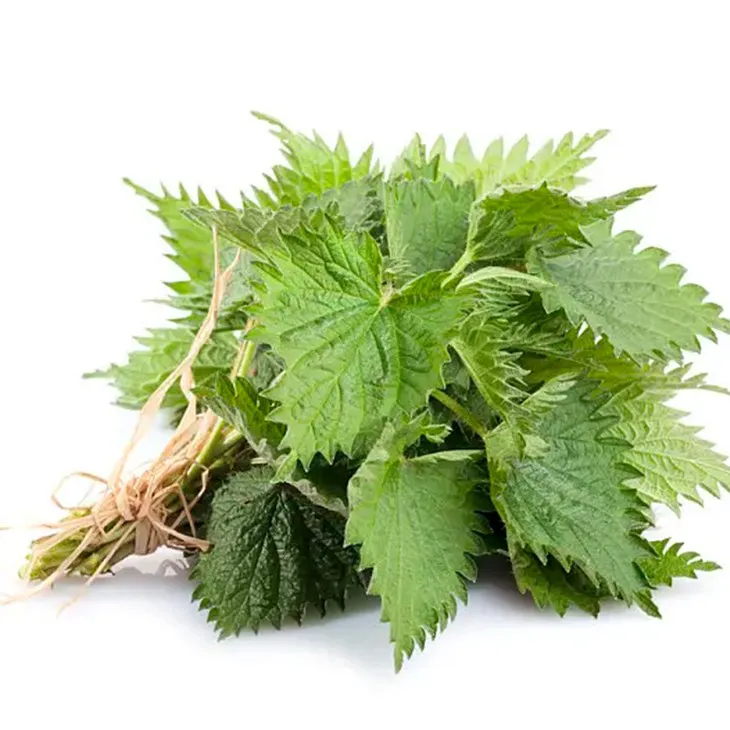- 0086-571-85302990
- sales@greenskybio.com
How to Extract Nettle Leaf Extract from Plants.
2024-11-30

1. Introduction
Nettle leaf extract has emerged as a valuable component with a wide range of applications in the medicine, cosmetics, and food industries. The unique properties of nettle leaves make them a rich source of bioactive compounds. However, the extraction process is crucial to obtain a high - quality extract that can be effectively utilized in these industries. This article delves into the detailed process of extracting Nettle leaf extract from plants.

2. Collection of Nettle Leaves
2.1. Selection of the Right Time
The timing of nettle leaf collection is of utmost importance. Nettle plants typically have different growth stages, and the leaves are most suitable for extraction at a particular point in their growth cycle. Generally, it is advisable to collect the leaves during the early growth stages, preferably before the plant flowers. At this time, the leaves are likely to have a higher concentration of the desired bioactive compounds. For example, in spring, when the nettle plants are young and vigorous, the leaves are rich in nutrients and bioactive substances.2.2. Ideal Environmental Conditions
The environmental conditions where the nettle plants grow also play a significant role. Nettle plants that grow in clean, unpolluted areas are preferred. Avoid collecting leaves from plants near industrial areas or those exposed to high levels of pesticides or other contaminants. Additionally, plants growing in well - drained soil with adequate sunlight exposure tend to produce healthier leaves. The location of the nettle patch should be carefully considered to ensure the quality of the collected leaves.2.3. Harvesting Technique
When harvesting nettle leaves, it is essential to use proper techniques. Wear protective gloves as nettle leaves can cause skin irritation due to the presence of stinging hairs. Use scissors or pruning shears to carefully cut the leaves from the plant. Avoid pulling or tearing the leaves, as this may damage the plant and also affect the quality of the leaves. Only select healthy - looking leaves, free from any signs of disease or damage.
3. Extraction Methods
3.1. Solvent Extraction
- Principle: Solvent extraction is based on the principle of solubility. Different solvents are used to dissolve the bioactive compounds present in the nettle leaves. Commonly used solvents include ethanol, methanol, and ethyl acetate. These solvents have the ability to extract a wide range of compounds such as flavonoids, phenolic acids, and terpenoids from the nettle leaves.
-
Procedure:
- First, the collected nettle leaves are dried and ground into a fine powder. This increases the surface area of the leaves, facilitating better extraction.
- The powdered nettle leaves are then placed in a suitable extraction vessel. A known amount of the selected solvent is added to the vessel in a specific ratio (e.g., 1:10, leaf powder to solvent ratio).
- The mixture is then stirred or shaken for a specific period, usually several hours to a few days depending on the nature of the compounds to be extracted. For example, for some flavonoid extraction, a stirring time of 24 - 48 hours may be sufficient.
- After the extraction period, the mixture is filtered to separate the liquid extract (containing the dissolved bioactive compounds) from the solid residue (the undissolved plant material).
-
Advantages:
- Solvent extraction is a relatively simple and cost - effective method. It can be carried out in a laboratory or on a small - scale production level with basic equipment.
- It has the potential to extract a large variety of bioactive compounds with different polarities, depending on the choice of solvent.
-
Limitations:
- The use of organic solvents may pose safety and environmental hazards. Solvents such as methanol are toxic, and proper handling and disposal procedures are required.
- The extraction efficiency may not be as high as some other methods for certain compounds, especially those that are strongly bound to the plant matrix.
3.2. Steam Distillation
- Principle: Steam distillation is used mainly for the extraction of volatile compounds present in nettle leaves. The process involves passing steam through the nettle leaves. The volatile compounds, which have a lower boiling point than water, vaporize along with the steam. These vapors are then condensed back into a liquid, separating the volatile compounds from the non - volatile components of the leaves.
-
Procedure:
- The nettle leaves are placed in a distillation apparatus. Steam is generated and passed through the leaves at a controlled rate.
- The vapors that are produced, containing the volatile compounds and steam, are passed through a condenser. In the condenser, the vapors are cooled and condensed back into a liquid.
- The condensed liquid, which is a mixture of water and the extracted volatile compounds, is then collected. The water - soluble volatile compounds can be further separated from water using techniques such as liquid - liquid extraction if required.
-
Advantages:
- It is an excellent method for extracting volatile compounds such as essential oils present in nettle leaves. These volatile compounds often have unique aromas and therapeutic properties.
- Steam distillation is a relatively clean method as it does not involve the use of organic solvents, reducing environmental and safety concerns.
-
Limitations:
- It is mainly limited to the extraction of volatile compounds and may not be suitable for extracting non - volatile bioactive compounds present in nettle leaves.
- The process can be time - consuming and energy - intensive, especially when large quantities of nettle leaves need to be processed.

4. Purification Steps
After the extraction process, purification steps are essential to obtain a high - quality Nettle leaf extract.
4.1. Filtration
Initial filtration is often the first step in purification. After solvent extraction or steam distillation, the extract may still contain some solid particles or impurities. Filtration through a filter paper or a membrane filter with an appropriate pore size can remove these larger particles. For example, a filter paper with a pore size of 0.45 μm can effectively remove most of the undissolved plant debris from the extract.4.2. Centrifugation
Centrifugation can be used to further purify the extract. By subjecting the extract to high - speed rotation in a centrifuge, smaller particles and impurities that are not removed by filtration can be separated. The centrifuge forces the denser particles to settle at the bottom of the centrifuge tube, while the purified extract remains on top. This step is especially useful for removing emulsions or fine particles that may be present in the extract.4.3. Chromatographic Separation
Chromatographic techniques can be employed for more precise purification. For example, high - performance liquid chromatography (HPLC) can be used to separate different bioactive compounds present in the nettle leaf extract based on their different chemical properties such as polarity and molecular size. HPLC allows for the isolation and purification of specific compounds of interest, which is crucial for applications in the pharmaceutical and cosmetic industries where high purity is required.5. Conclusion
Extracting nettle leaf extract from plants is a multi - step process that requires careful attention at each stage. From the proper collection of nettle leaves to the selection of the appropriate extraction method and the subsequent purification steps, each aspect plays a vital role in obtaining a high - quality extract. The extract obtained can then be utilized in various industries such as medicine, cosmetics, and food, contributing to the development of new products with potential health benefits and other desirable properties.
FAQ:
What are the criteria for proper collection of nettle leaves?
For proper collection of nettle leaves, it is important to choose the right time. Usually, the leaves should be collected when they are fully grown but not yet starting to wither. They should be free from diseases, pests, and any signs of damage. Also, it is advisable to collect them in a clean environment, away from sources of pollution such as industrial areas or roadsides.
What are the advantages of solvent extraction for nettle leaf extract?
Solvent extraction has several advantages. It can be a highly effective method for extracting a wide range of compounds from nettle leaves. It allows for the extraction of both polar and non - polar compounds depending on the solvent used. Solvent extraction can also be relatively easy to control in terms of temperature, time, and solvent - to - sample ratio, which can help in optimizing the extraction process to obtain a high - yield and high - quality extract.
What are the limitations of steam distillation in extracting nettle leaf extract?
Steam distillation has some limitations. One major limitation is that it is mainly suitable for extracting volatile compounds. So, non - volatile and thermally labile compounds may not be effectively extracted using this method. Also, steam distillation can be a time - consuming process, and it may require a relatively large amount of energy. Additionally, the quality of the extract obtained may be affected by factors such as the quality of the steam and the efficiency of the distillation apparatus.
Why is purification important in obtaining nettle leaf extract?
Purification is crucial in obtaining nettle leaf extract. The initial extract obtained through extraction methods may contain impurities such as unwanted plant materials, solvents, and other by - products. Purification helps to remove these impurities, which can improve the quality, safety, and effectiveness of the extract. A purified extract is more suitable for applications in medicine, cosmetics, and food industries as it meets the required quality standards and regulatory requirements.
Can different extraction methods be combined for nettle leaf extract?
Yes, different extraction methods can be combined for nettle leaf extract. Combining methods can sometimes overcome the limitations of individual methods. For example, a combination of solvent extraction and steam distillation may be used. Solvent extraction can be used first to extract a wide range of compounds, and then steam distillation can be applied to further purify and isolate specific volatile compounds. This combination can potentially result in a more comprehensive and high - quality extract.
Related literature
- Extraction of Bioactive Compounds from Nettle Leaves: A Review"
- "Nettle Leaf Extract: Production and Applications in the Pharmaceutical Industry"
- "Optimization of Nettle Leaf Extract Preparation for Cosmetic Use"
- ▶ Hesperidin
- ▶ Citrus Bioflavonoids
- ▶ Plant Extract
- ▶ lycopene
- ▶ Diosmin
- ▶ Grape seed extract
- ▶ Sea buckthorn Juice Powder
- ▶ Fruit Juice Powder
- ▶ Hops Extract
- ▶ Artichoke Extract
- ▶ Mushroom extract
- ▶ Astaxanthin
- ▶ Green Tea Extract
- ▶ Curcumin
- ▶ Horse Chestnut Extract
- ▶ Other Product
- ▶ Boswellia Serrata Extract
- ▶ Resveratrol
- ▶ Marigold Extract
- ▶ Grape Leaf Extract
- ▶ New Product
- ▶ Aminolevulinic acid
- ▶ Cranberry Extract
- ▶ Red Yeast Rice
- ▶ Red Wine Extract
-
Motherwort Extract
2024-11-30
-
Europen Bilberry Extract
2024-11-30
-
Phyllanthus Emblica Extract
2024-11-30
-
Cassia Seed Extract
2024-11-30
-
American Ginseng Root Extract
2024-11-30
-
Green Tea Extract
2024-11-30
-
Kelp Extract Powder
2024-11-30
-
White Peony Extract
2024-11-30
-
Elderberry Extract
2024-11-30
-
Hesperidin
2024-11-30





















